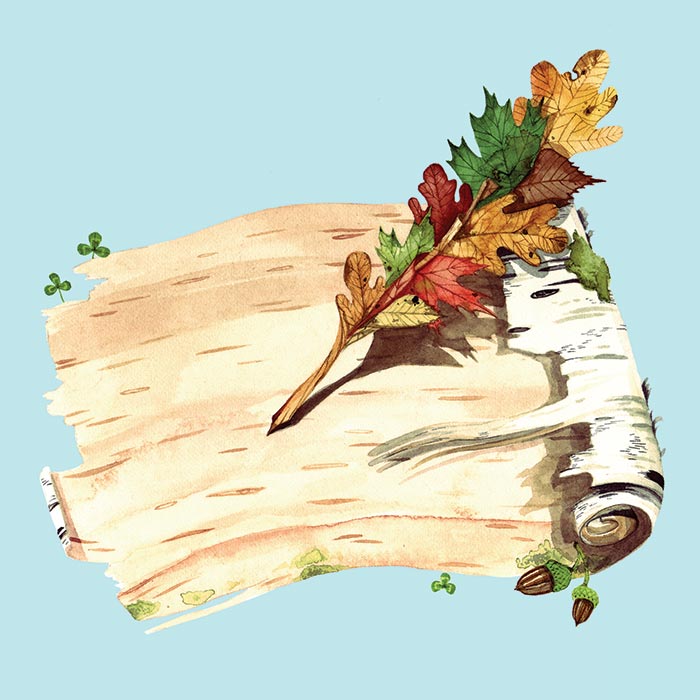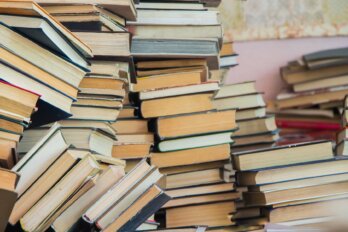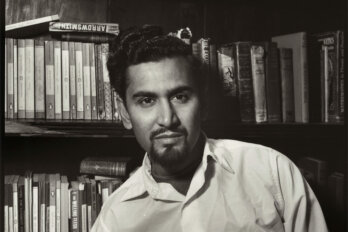
There’s an ecological renaissance under way in Canada right now, but chances are you haven’t heard of it, because it is flowering in one of the most ignored and feared regions of the high arts: poetry. Its chief proponents—Robert Bringhurst, Dennis Lee, Tim Lilburn, Don McKay, and Jan Zwicky, all major Canadian poets—have together earned around a dozen nominations for Governor General’s Literary Awards, in addition to numerous other accolades, such as the prestigious Griffin Poetry Prize. As rewarding as their work is, it has yet to be discovered by a wider audience.
These poets ask foundational questions about how we perceive and think and relate to non-human nature, questions that encourage us to look beyond the language of sustainability and reconsider the basic facts of our very existence. Instead of Northrop Frye’s iconic “Where is here? ” they ask, “What is here? ” and “How to be here? ” To them, a livable future depends on more than simply taking the blue box to the curb; it means tackling the difficult work of crawling out from under a constricting account of reality.
As poets, they remain hard to categorize or classify. They aren’t a school of poetry, or a movement conforming to a particular aesthetic stance. There is no manifesto or program, no chief ideologue, no overarching theory. Their poetry isn’t “ecological” because they refer to sharp-shinned hawks or bird’s nest lichen. Complicating matters, they continually refer to a number of disparate philosophical traditions that are largely forgotten in the West—presocratic Greek thought, the wisdom of Taoist and Buddhist Asia, native North American oral literature, medieval Christian mysticism—along with classical musicians, continental philosophers, and even Bob Dylan. Reading them is, in short, akin to learning Chinese: deeper understanding requires knowledge of a web of cultural references and intellectual ancestors.
What brings them together? Consider the titles of Lilburn’s two anthologies, which introduce them as a group, Poetry and Knowing (1995) and Thinking and Singing (2002), or Zwicky’s 2003 book Wisdom and Metaphor, titles that suggest that these poets are really “poet-thinkers.” While they are all university educated and philosophically engaged, this doesn’t mean that they simply cut and paste complex ideas from discursive prose into verse. Each of them has stumbled onto a way of writing that can be said to think poetically through a dance of ideas, images, sounds, and feelings that enact connectedness; each, according to critic Stan Dragland, “would say that their thinking is purest when it takes the form of poetry.”
This is a major undertaking. They have broken through a rigid division in Western thought that has effectively kept thinking and singing separate from each other for hundreds of years. We’ve come to associate thinking, for example, with such legitimate, muscular vocations as mathematics and scientific investigation. Singing, on the other hand, has been shackled to all that is considered secondary to the ascent of the rational mind: values, emotions, ethics, beliefs. The thinking and singing poets, as we might call them, have orchestrated something of a family reunion between siblings separated for centuries.
What they do with this speculative mode of thought distinguishes them from other philosophical poets, and qualifies their efforts as uniquely Canadian. They use poetry to think, along with the textures and rhythms, complicated histories, and subterranean energies of particular places: the family farm Zwicky grew up on in northwestern Alberta; Lee and Toronto; McKay and the west coast of Vancouver Island and the Avalon Peninsula. Working with the multiple resonances of words, the binding properties of metaphor, and other resources available to poets but off limits to prose writers, they emulate the nature of interconnectedness on the page. If the earth is undergoing constant change and transformation, moving like a river through time, then the poet-thinker needs to build what Robert Bringhurst calls “kayaks” of thought to keep up with it; some “lithe, open, agile, portable structures,” not bulky “steamships and apartment blocks of belief.” Following this hunch has led the thinking and singing poets to a number of radical innovations in poetry.
Early one July morning, Don McKay and I make our way through the heavy fog rolling in off the Pacific to the turnoff of the West 100, an old logging road about an hour and a half outside Victoria. This is the setting of the poems of Strike/Slip, winner of the 2007 Griffin Poetry Prize, as well as of essays from Deactivated West 100 (2005).
Now sixty-six years old, McKay is the craggy face of Canadian poetry. He headlines innumerable poetry workshops, readings, and literary festivals from coast to coast, living the dilemma between promoting the craft and supporting younger talent through editorial work while securing for himself enough solitude to read and write.
The West 100 is in bad shape, its surface covered in craters and choked with salmonberry bushes that scrape the sides of the vehicle as we ease our way along. When a particularly treacherous pothole opens up in front of us, we continue on foot, pushing through the underbrush to Loss Creek Valley. We hop our way from rock to rock onto exposed riverbed. A massive clear-cut looms overhead, the valley slope scraped bare as if by a mudslide.
McKay feels compelled to face such landscapes head on, unusual for a self-defined “nature poet.” He is looking for a kind of nature that cannot be reduced to provincial parks or conservation areas, one that may persist even in this clear-cut.
We are busy picking over basalt rocks on the riverbed when McKay silently alerts me to the arrival of an American dipper upstream. It’s the only other living being we have seen all morning, and, as we watch, it leaps from the top of a rock into the current, where McKay informs me it will walk along the river bottom to forage for tiny insects. It pops up several seconds later, gives itself a shake, and flies off.
A poem of his from Strike/Slip, “Dipper at Parkinson Creek,” describes an identical encounter, and it reads like an alternative to the field guide, giving us an accurate account of the bird’s movements and feeding habits. Yet it’s more than an iteration of ornithological details. McKay’s technique is two-track: we see the dipper as it flies into view, and hear the speaker’s own train of thought as he greets it, the poem amounting to a tiny snapshot of a mind stirred to life by the world. Standing there with McKay as we watch the dipper dart upstream, it is as though we’ve not only stepped into his poem, but into a broader definition of artistic biography.
Robert Bringhurst lives on Quadra Island, off the BC coast, a zigzag of a ferry ride out of Campbell River. If you visit, park your vehicle on the other side of his forest property, under an impressive, pagoda-like carport hewn from Douglas fir logs. A gravel trail winds around towering firs and hemlocks, over a pair of Japanese footbridges, and past a devil’s club. Stepping out of the forest and into waist-high grass, you’ll feel as though you’ve arrived at a hermitage in the wilderness: on your right, there’s a kidney-shaped frog pond; on your left, a two-storey writing studio and library designed in the manner of a zendo, or meditation hall.
Bringhurst, sixty-two, is one of Canada’s overlooked literary geniuses. He is a poet, translator, typographer, and book designer, the kind of person who could go into the forest with a knife and a pencil, and come out three weeks later with a book.
We’re standing on the stoop of the zendo, enjoying some mid-morning sunshine. It’s early August, and the trees around us are buzzing with goldfinches, pileated woodpeckers, and northern flickers. Earlier, three black-tailed deer, regular visitors, browsed their way around the frog pond. This is a good place to talk about polyphony, Bringhurst’s practice of composing poems for two or more voices that literally speak at the same time, his way of writing the forest—or the crowded bus or café—as we experience it in our ears, as an all-at-once bandwidth of sound. Yet doing this is no easy task. It requires rethinking the very logic of the medium of print, which has evolved to showcase one voice at a time, sequentially.
With “The Blue Roofs of Japan” (1986), Bringhurst began breaking away from this logic by copying the poem’s two speaking parts on acetate transparencies, and then layering the sheets on top of each other. As his musical apprenticeship continued, his experiments grew more complex: New World Suite no. 3, first performed in 1990, is composed for three voices, while Ursa Major (2003) features six speakers and four languages. You can find many of these pieces in his Selected Poems, published this spring. Yet however exquisite Bringhurst’s typographic renderings may be, we must remember that they are written first for the voice and the ear, not the eye; they exist most fully in articulated performance.
If we hear a vocal ecology in Bringhurst’s polyphonies, a web of overlapping sounds, Jan Zwicky gives us an ecology of insights—intellectual, aesthetic, intuitive, and emotional—in her two groundbreaking books of collage philosophy, Lyric Philosophy (1992) and Wisdom and Metaphor (2003). She uses the left-hand pages of these books’ openings for her own writing—short, aphoristic statements—while reserving the right-hand side for block quotations from her influences and interlocutors. Zwicky—a professor of philosophy at the University of Victoria whose volume of poetry Songs for Relinquishing the Earth won a Governor General’s Award in 1999—is also a professional musician, and here she conducts a symphony of thought, asking readers to move back and forth between the two sets of writings to work out for themselves the connections and contradictions between them. These books are designed like spiderwebs, dazzling in how they resonate at the level of individual page openings, sections, and whole movements. Their shape reflects one of her central concerns: living honestly and with integrity requires a form of thought that echoes the way the world hangs together.
In an exchange of emails, Dennis Lee writes, “If the planet is re-greenable, words are one place it has to happen. Not as a substitute for action, science, laws… but as one of the many dimensions in which we have to re-fashion our dwelling on earth. And as it happens, this is the one medium which poets inhabit simply by virtue of their calling.”
Lee’s vocation has involved orienting the English language to local currents of energy that animate and sculpt the land, for him a matter of cultural survival. In Civil Elegies (1972), one of Canada’s best and most overlooked long poems, this primordial energy bursts up through Nathan Phillips Square in downtown Toronto, disorienting the poem’s beleaguered seeker; in Yesno (2007), his most recent collection, it bubbles up inside of individual words and melts them into strange shapes, forewarning the reader of the immense pressure human civilization is placing on the earth.
Readers familiar with Lee’s celebrated children’s verse are often unaware that the poet who wrote Alligator Pie is also, as McKay puts it, responsible for introducing into Canadian literature “a new ontological understanding of the natural world.” While the thinking and singing poets have no ideologue, Lee serves as something of an older brother figure. We can look to Civil Elegies and his other poems and essays for whole segments of the grammar of thought through which this group articulates itself: challenging ideas of “being,” “non-being,” “polyphony,” “what is,” attention to particularity, and an awareness of the sheer difficulties involved in extricating one’s thinking from the logic of modernity.
The thinking and singing poets may be defined as orphans of the technology-versus-being debate that flourished briefly in the ’50s and ’60s, which had as its spokesmen in continental European philosophy Martin Heidegger and Jacques Ellul, and, in Canadian letters, George Grant, whose book of essays Technology and Empire (1969) Lee edited for House of Anansi Press. What would become of nature, these thinkers asked, if it were claimed as nothing more than natural resources, “a giant gasoline station,” as Heidegger memorably wrote? What would become of human nature if our values were separated from the actual world we live in and reduced to mere subjective preference? The technology-versus-being debate, however relevant to our present circumstances, was drowned in the wave of critical theory that swept through the universities after the events in Paris in May of 1968, and in the university system’s own increasingly indentured relationship to technological civilization. Talk of “being” in academia today is largely dismissed as an anachronism.
Grant once argued that the foundational experience for non-native Canada—our “primal,” as he called it—lay not in any inheritance from Athens or Jerusalem, but in the historic encounter between settlers and “the alien and yet conquerable land.” Because that land is always changing, each generation needs to renegotiate this encounter for its time. A previous generation of Canadian writers approached this encounter, not in terms of “being” or “polyphony,” but through the concerns of that era: the nationalism that arose in opposition to the Vietnam War, the euphoria around the country’s centennial celebrations. It is the thinking and singing poets who are answering the call of the primal in our time.
While Lee may be the group’s elder statesman, Tim Lilburn is its catalyst. He met McKay at a poetry reading at the Princess Theatre in Kitchener in the late ’80s, and through him became aware of pockets of conversation taking place across the country among poets with similar concerns. Lee and Bringhurst, for example, have enjoyed a lengthy correspondence since the ’70s. These conversations began to coalesce in a couple of gatherings in the mid-’90s, the largest taking place at Trent University in Peterborough in 1996. “Nowhere else do you find a conversation like this among poets, expressed in essays, poems, and letters, not even in the powerhouse of twentieth-century American poetry,” Lilburn says. “I thought there was something historic and important that I was witnessing in these conversations, and I wanted to take a snapshot of it.”
In Going Home, a book of essays published last year, Lilburn suggests that what we need to undertake as a civilization is a “land apprenticeship.” It’s an intriguing idea that gets close to the core of the thinking and singing project. He writes, “Some tasks are generational, and this one is so freshly started most of us are not even aware we have begun it, the work of making a home where we are.” If we are willing to do the hard work of paying attention to what actually surrounds us, there is less need to look elsewhere for a meaningful existence. Such imaginative work is restorative: the industrial forest I visited with McKay felt as if it had been redeemed in some small way through his poetry. Reading and listening to Bringhurst’s polyphonies, it isn’t hard to find your ears tuning to the bandwidth of sound around and within you. What these poets offer are five different bridges back into the land itself, five ways of better inhabiting the places we live in. A whole set of landscapes awaits rediscovery. And the circle of this conversation is ever widening, as Lilburn writes in Thinking and Singing: “You are welcome to join in; pull up a chair, lean back from the table. Where were we? ”





